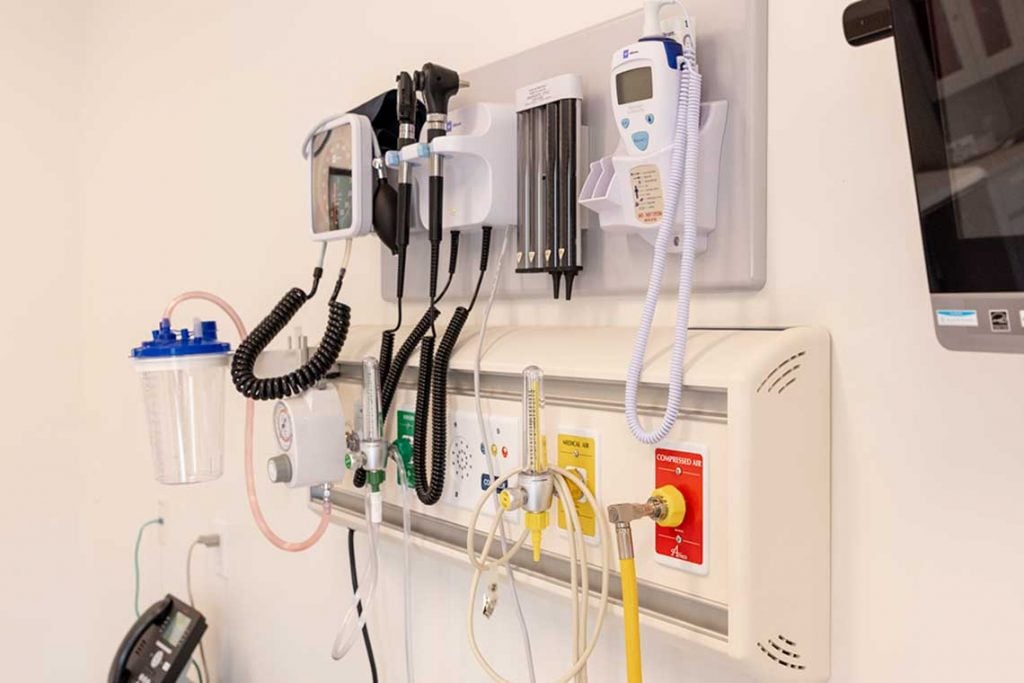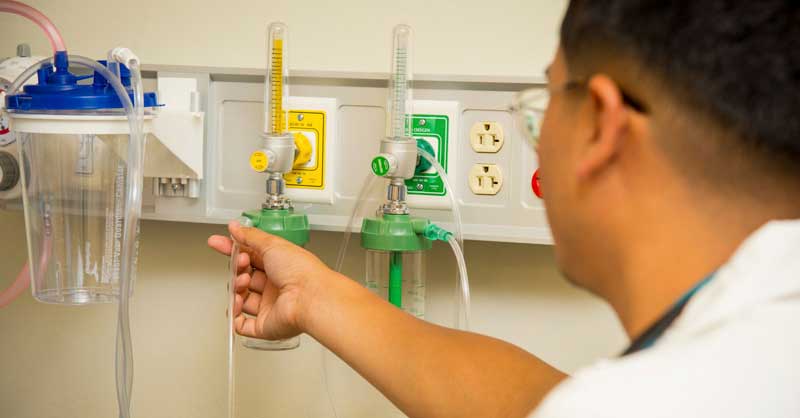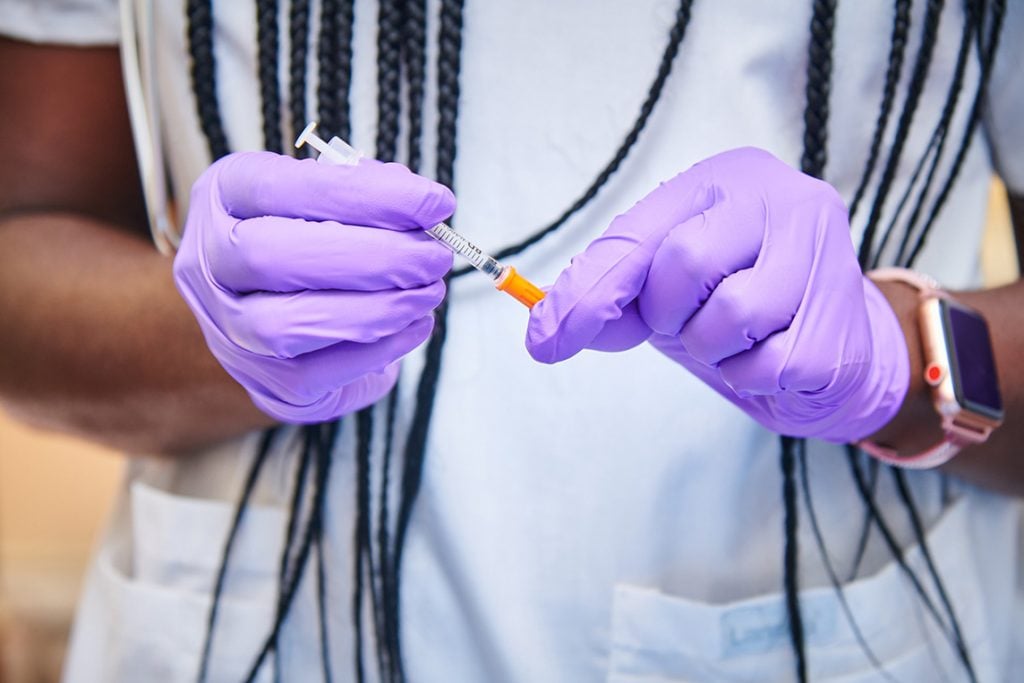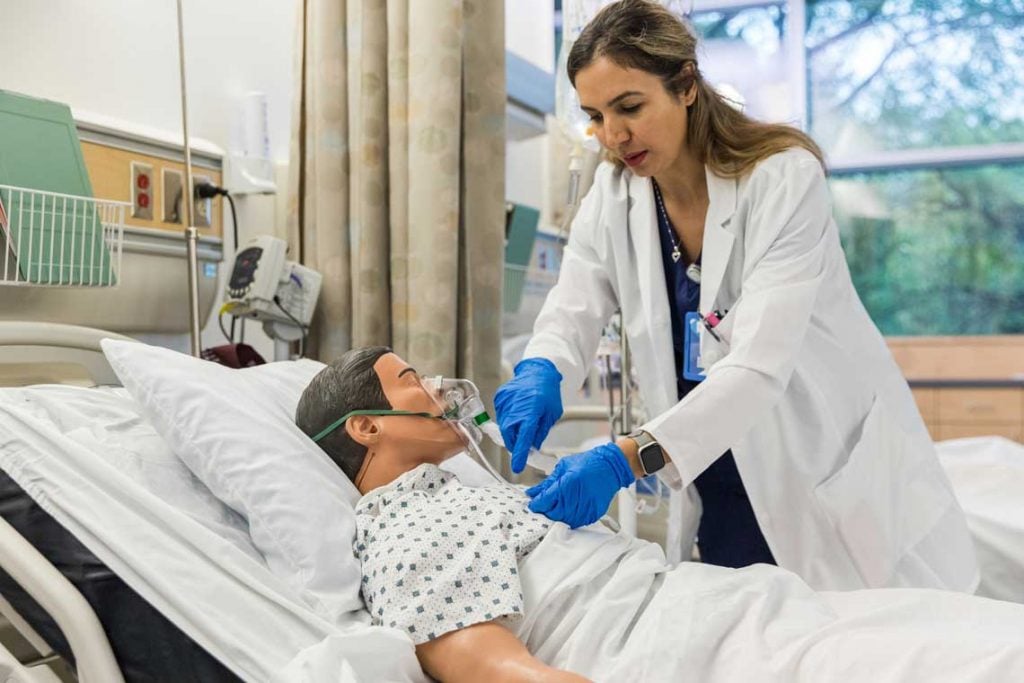5 Common Nursing Errors to Avoid
Each blog post is dated and contains accurate information as of that date. Certain information may have changed since the blog post publication date. If you would like to confirm the current accuracy of blog information, please visit our ABSN overview page or contact admissions at (844) 347-2503.
There are many types of medical errors. Some of the most common nursing errors include fall-related injuries, hospital-acquired infections, needlestick injuries, charting errors, and medication errors. Proper nursing education can go a long way toward reducing the risk of mistakes in healthcare.

Nursing is an exciting yet challenging field. Nurses are tasked with caring for multiple patients while upholding safe care practices. Patient safety must be at the forefront of every nurse’s mind; however, it can be complicated, as many factors can contribute to undermining it. Unfortunately, this sometimes leads to nursing errors.
At the University of Mount Saint Vincent, our Accelerated Bachelor of Science in Nursing (ABSN) program emphasizes the importance of patient safety in our curriculum. Our students have ample opportunities to refine their nursing skills and decision-making process in our skills and simulation labs, which provide them with the knowledge needed to reduce nursing mistakes.
Below, we will discuss nursing mistakes, their most common causes, and the five most common types of medical errors.

What is an ABSN program? Read more to learn if it’s right for you.
What Are Errors in Nursing?
Medical errors are considered a public health problem and are believed to be the third leading cause of death in the U.S. About 400,000 hospitalized patients experience some form of medical error each year.
What exactly is a medical error? There are various definitions, but it’s generally accepted that a medical error is a failure of care or a deviation from standard care that may or may not harm the patient.
There are many different types of medical errors, such as those involving medications, disinfection procedures, and patient mobility. Nursing errors are mistakes made by nurses, although any type of healthcare professional could potentially contribute to a medical error.
Key Causes of Nursing Mistakes
While many different types of errors can occur, they all have something in common: They are preventable. Understanding the most common causes and risk factors of these mistakes is integral to taking preventive action.

Some of the most common factors that lead to mistakes include:
- Poor communication
- Insufficient flow of information
- Deviations from nursing policies, safety protocols, procedures, and standards of care
- Understaffing
- Inadequate policies
The last two issues are largely beyond nurses’ control, as they are organizational matters. However, just as nurses serve as advocates for their patients, they can also advocate for a higher standard of nursing within their organization, such as by pushing for stronger policies and more staffing.
5 Common Types of Medical Errors
If you plan to become a nurse, your highest priority will be promoting the health and safety of your patients. It’s important to take the time to learn about the common types of nursing mistakes to avoid them in your work.
Nursing skills development can help curb nursing errors. Explore these 15 essential skills for nurses.

1. Medication Errors in Nursing
Administering medications, whether orally or via IV, is one of a nurse’s most frequently performed tasks. It stands to reason that medication errors in nursing are also one of the most common types of mistakes.
The different forms of medication errors include:
- Miscalculating the dosage of the right medication
- Administering the wrong medication
- Administering a medication to which the patient is allergic
- Administering medications that cause interactions with the patient’s other medications
- Providing medications that are contraindicated given the patient’s medical conditions
Electronic prescriptions and patient records can reduce medication errors, as handwritten notes may sometimes be illegible. Additionally, some medications have similar names, and illegible handwriting can make it easier to confuse them.
Medication errors can still occur even with electronic prescriptions and patient records because of failure to pay close attention to or double-check the patient’s records. Medication errors can be mitigated by always closely reviewing patient records and taking extra care when administering.
2. Hospital-Acquired Infections (HAIs)
Hospitals are supposed to be meticulously clean, healthy places, yet about one in every 31 hospitalized patients has at least one HAI at any given time in the U.S. Many types of HAIs can affect patients, including:
- Surgical site infections (SSIs)
- Ventilator-associated pneumonia
- Catheter-associated urinary tract infection (CAUTI)
- Central line-associated bloodstream infection (CLABSI)
Patients may acquire these types of infections while still in the hospital, or symptoms may develop shortly after discharge. To avoid these nursing errors, nurses need to strictly follow all hygiene, cleaning, and sterilization protocols.

3. Fall-Related Injuries
Every single patient—whether young or old, post-op or not — has the potential to suffer a fall-related injury while hospitalized. Patients may fall when they need to go to the bathroom or if they simply get out of bed. Patients are often eager to regain independence and attempt to move without assistance before they are ready.
Every fall has the potential to cause serious injuries, which will delay the patient’s recovery, cause additional complications, and create legal problems for the hospital. Nurses can reduce the risk of fall-related nursing mistakes by taking the following precautions:
- Identify the patients most at risk of falling while keeping in mind that any patient could potentially fall
- Frequently check on all patients, especially high-risk patients
- Ensure patients have everything they need within arm’s reach
- Ensure patients know where the call button is and assure them that nurses are available for assistance
4. Insufficient Charting
Insufficient charting is a common nursing error, particularly for new and inexperienced nurses. Charting is a critical part of the job, as it documents patient conditions, treatment, and status changes. This not only ensures a seamless transition from one nursing shift to the next but also allows all providers collaborating on the patient’s care to stay up to date.
Nurses need to document every single nursing action they perform for that patient in an electronic health record (EHR). This includes:
- Health and drug information
- Administration of each dosage of medication
- Each instance of discontinued medication
- All changes in the patient’s status/health condition
- Any orders from the physician or changes and additions to the treatment plan
For instance, before you dispense pain medication to a post-op patient, you must record it in the patient’s EHR.
5. Needle-stick Injuries
While most types of medical errors affect patients, some affect healthcare workers. Nurses are vulnerable to needle-stick injuries, also known as sharps injuries. A needle-stick injury occurs when a used needle punctures the skin accidentally. For instance, you may have just used a needle on a patient and then accidentally pricked your own skin with it before you could dispose of it properly.

While the pinprick itself isn’t dangerous, it may introduce various illnesses into your bloodstream. Needlestick injuries can expose nurses to blood-borne pathogens like HIV, hepatitis B, and hepatitis C.
All needlestick injuries require immediate action; nurses must assume the worst will happen and act accordingly. The area should be thoroughly scrubbed with soap and water and “milked” to encourage bleeding. The sharps injury must also be reported to the charge nurse or another supervisor immediately.
To reduce the risk of sharps injuries, remember that gloves won’t protect you from them. Follow all safety precautions to the letter. Never try to re-cap a used needle, and place all used needles into an approved sharps container immediately after use.

Learn how nursing simulation labs can help you develop the necessary nursing skills to prevent errors.
Prepare to Prioritize Patient Safety at the Mount
All these types of medical errors are preventable, and prevention starts with thorough nursing education. At the University of Mount Saint Vincent, our nursing instructors guide students through a progressive curriculum that builds key skills and nursing knowledge.
Although our ABSN program can be completed in as few as 16 months, the curriculum is thorough and comprehensive, allowing you to receive the same quality of education as students following a four-year BS in nursing.
Our friendly admission counselors are standing by to answer your questions and explain how the application process works. Contact us today and begin working toward a rewarding career in nursing.
